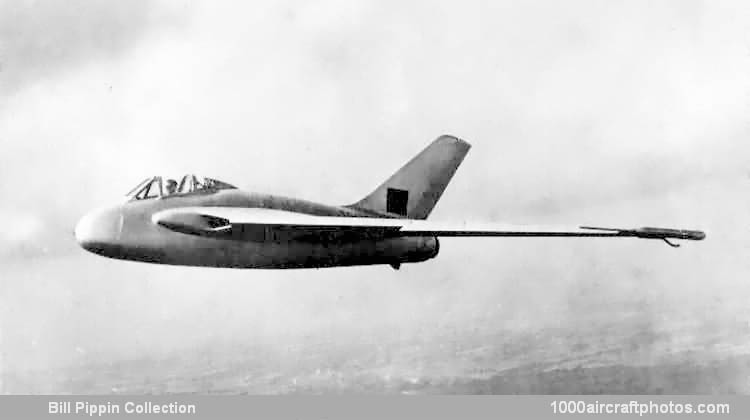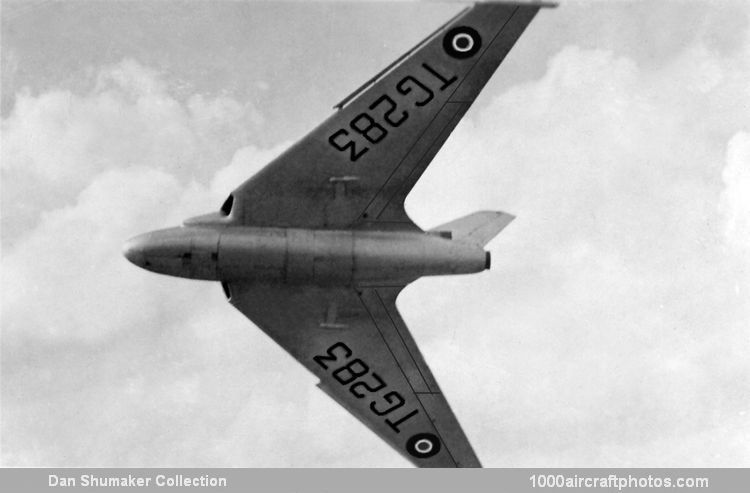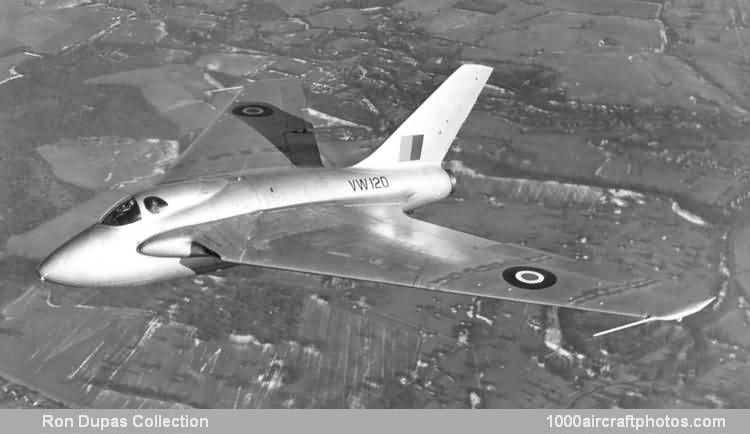02/28/2010. Remarks by
Johan Visschedijk: "The single-seat single-engine tailless jet research aircraft D.H.108, unofficially named Swallow, was designed to Specification E.18/45 to gain experience with swept-wing aircraft. To speed the design of this revolutionary aircraft, captured German information, particularly Messerschmitt calculations and research data for design and construction of swept wings was used. Two prototypes were ordered, one for low speed and the other for high-speed research, these were converted from D.H.100 Vampire F.Mk.I jets.
(TG283) (
Dan Shumaker Collection)
The first low speed aircraft (s/n TG283) had a 43° swept-back metal wing attached to the wooden Vampire fuselage, still fitted with the original 3,100 lb (1,406 kg) st de Havilland Goblin 2 engine. A swept fin and rudder were fitted to the rear of the nacelle. Construction was completed in the Experimental Department in seven months, but as the runway at Hatfield had yet to be built, the prototype was taken to RAF Woodbridge for its maiden flight, that took place on May 15, 1946.
The high-speed prototype (s/n TG306) joined the program on August 1, it had a 45° swept-back wing and was powered by a 3,300 lb (1,497 kg) st Goblin 3 engine. Despite low power, the efficiency of the airframe gave a potentially record-breaking performance. It was decided to attempt to beat the absolute world speed record of 616 mph (991 kmh) achieved by a Meteor. During an early practice the D.H.108 reached 637 mph (1,025 kmh) at 9,000 ft (2,743 m), but on the final low level practice on September 26, 1946, the aircraft broke up killing Geoffrey de Havilland Junior.
(VW120) (
Ron Dupas Collection)
A third prototype (s/n VW120), incorporating a number of improvements, was ordered to continue the high-speed research program. A Vampire fuselage was again used, but had a more pointed nose, new canopy and strengthened structure. It first flew on July 24, 1947, and successfully broke the 62 mls (100 km) closed circuit record on April 12, 1948 flown by John Derry, a de Havilland test pilot, who achieved 605.230 mph (973.997 kmh) at low level. On 6 September 1948 the third D.H.108, again flown by John Derry, became the first British aircraft to exceed the speed of sound, achieving a Mach number between 1.0 and 1.1 in a dive.
The surviving aircraft were delivered to Farnborough for further development, but both crashed fatally. The high-speed prototype, VW120, was lost at Birkhill, Buckinghamshire, on February 15, 1950 in an unexplained accident, but most probably due to lack of oxygen for the pilot. The original low-speed prototype crashed near Hartley Wintney, Hampshire the following May 1 while in a spin."



